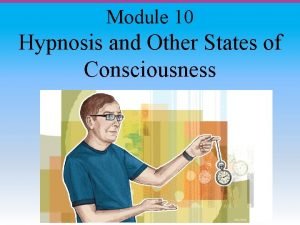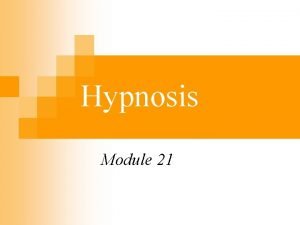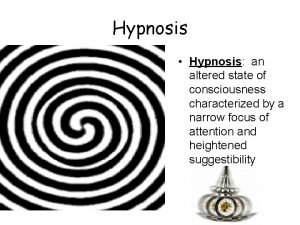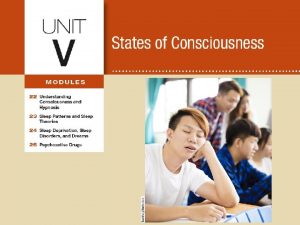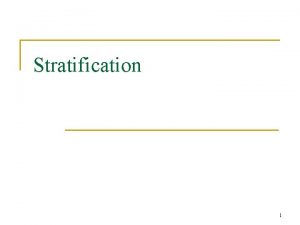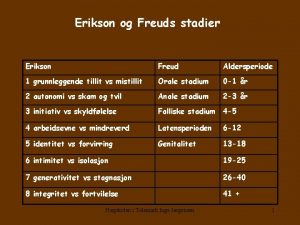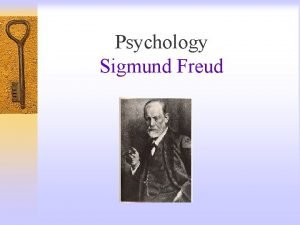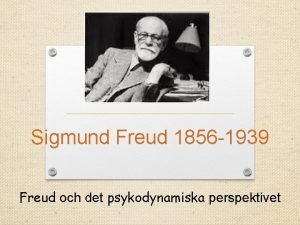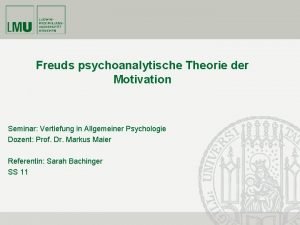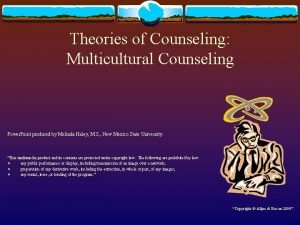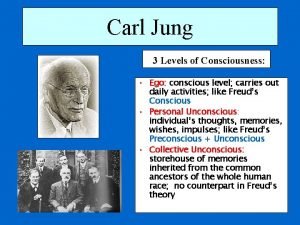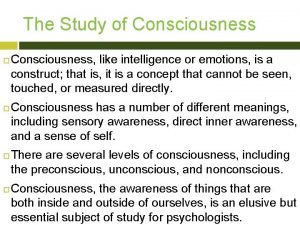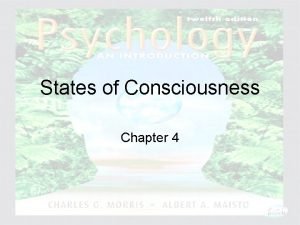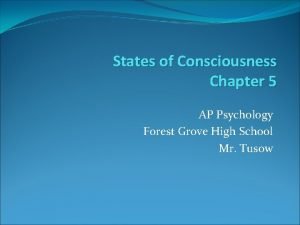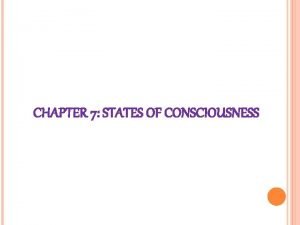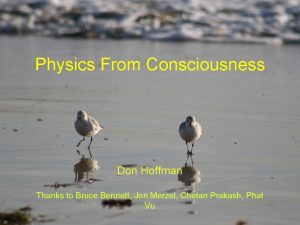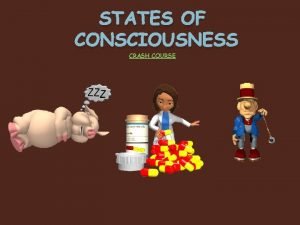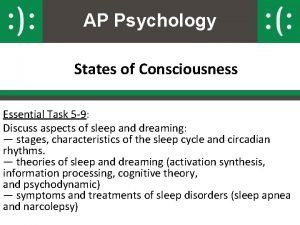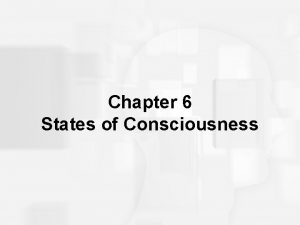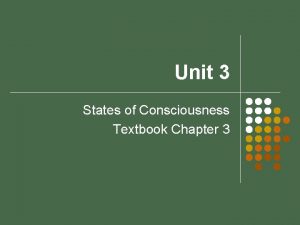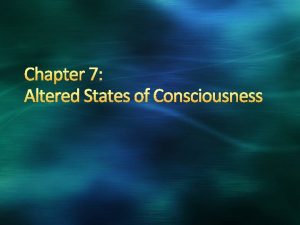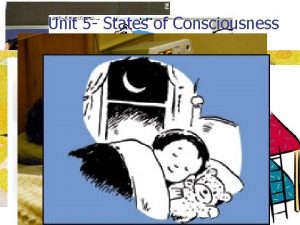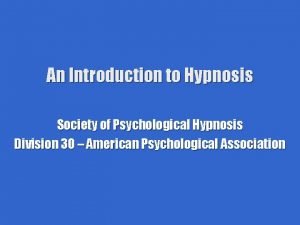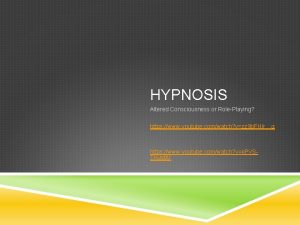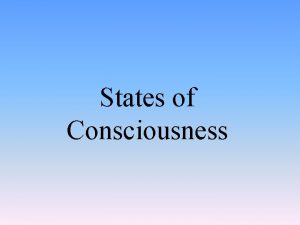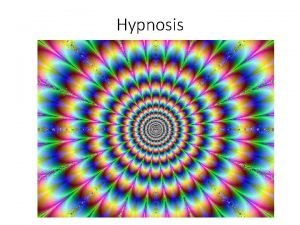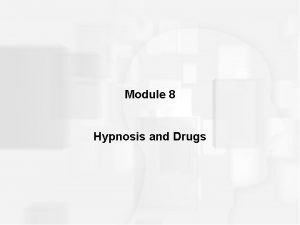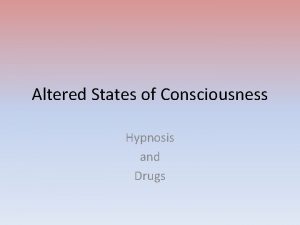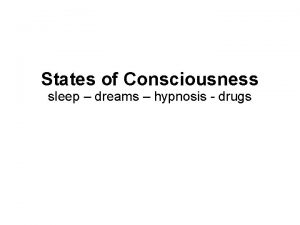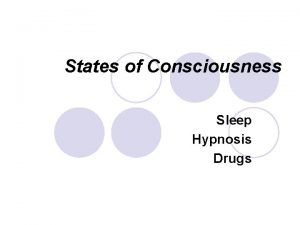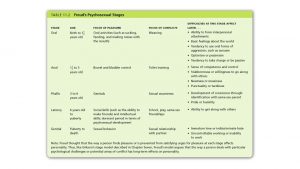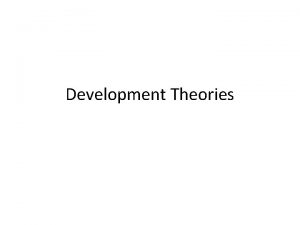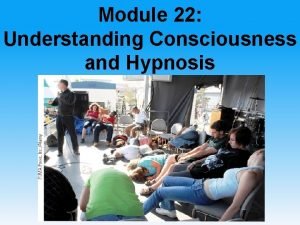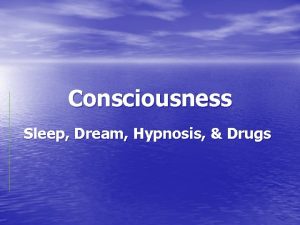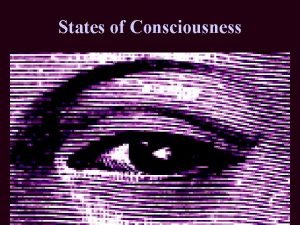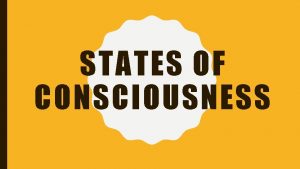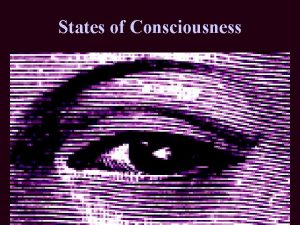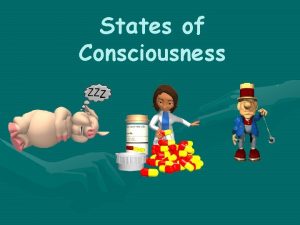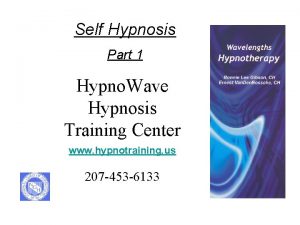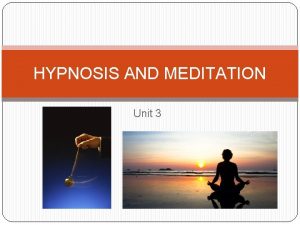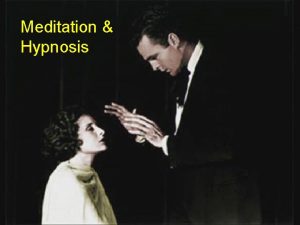Hypnosis States of Consciousness Freuds Levels of Consciousness






























- Slides: 30

Hypnosis

States of Consciousness

Freud’s Levels of Consciousness • Conscious Level: perceptions, thought • Preconscious Level: memories, stored knowledge • Unconscious Level: selfish needs, violent motives, immoral urges, fears, irrational wishes, shameful experiences, unacceptable desires

Consciousness • Awareness of oneself and one’s environment, Both inside and out. • Selective attention- focusing on a particular stimulus.

What is Hypnosis?

Hypnosis • A social interaction in which one person (the hypnotist) makes suggestions about perceptions, feelings, thoughts, or behaviors, and another person (the subject) follows those suggestions

Module 21: Hypnosis What is Hypnosis? : Social Influence Theory

Social Influence Theory • Powerful social influences produce a state of hypnosis. • This theory notes that a person’s physiological state does not change under hypnosis. • Social factors influence people to believe hypnosis will work.

Module 21: Hypnosis What is Hypnosis? : Divided Consciousness Theory

Divided Consciousness Theory • During hypnosis our consciousness splits so that one aspect of consciousness is not aware of the role that other parts are playing. • Promoted by Ernest Hilgard (19042001)

Module 21: Hypnosis Hypnotic Techniques

Hypnotic Induction • The process by which a hypnotist creates a state of hypnosis in a subject • Usually done by voicing a series of suggestions • Voice is usually calm and of a rhythmic tone

Hypnotizability • Differences in the ability of people to become hypnotized • Varies from person to person • Varies from situation to situation

Hypnotizability

Module 21: Hypnosis Hypnotic Techniques: Hypnotic Suggestions

Limits to Hypnotic Suggestions • Suggestions usually involve sensations, thoughts, emotions, and a wide variety of behaviors. • Hypnosis does not cause behaviors. • Hypnosis can lead people to certain behaviors but so can ordinary suggestions.

Module 21: Hypnosis Hypnotic Techniques: Posthypnotic Suggestions

Posthypnotic Suggestions • A suggestion, made during a hypnosis session, that the subject will carry out when no longer hypnotized • Technique can be used to encourage helpful behavior changes, such as stopping smoking or losing weight.

Hypnotic Amnesia • Inability to remember what happened during hypnosis because the hypnotist suggests that the subject will have no memory of that period of time

Hypnosis • Play “Hypnotic Dissociation and Pain Relief” (3: 03) Segment #2 from The Mind: Psychology Teaching Modules (2 nd edition).

Module 21: Hypnosis Applications of Hypnosis: Hypnosis and Memory

Hypnosis and Memory • There are isolated cases of hypnosis helping recall. • Cannot be sure if the memory came back due to hypnosis • Cannot be sure if the memory is accurate or one that is created to please the hypnotist

Module 21: Hypnosis Applications of Hypnosis: Hypnosis and Pain Control

Pain and Hypnosis • Hypnosis does work as a means to control pain. • Has a number of practical applications

Module 21: Hypnosis Applications of Hypnosis: Other Hypnotic Claims

Placebo Effect • Improvement due only to the power of positive expectations • People think they will get better so they do

Feats of Strength • Many feats of strength done under hypnosis can be accomplished without hypnosis.

Feats of Strength

Age Regression • Under hypnosis, the supposed ability to remember earlier periods of time in one’s life • Psychologists consider age regression demonstrations unreliable.

The End
 Divided consciousness theory of hypnosis
Divided consciousness theory of hypnosis Divided consciousness theory of hypnosis
Divided consciousness theory of hypnosis Hypnosis is an altered state of consciousness
Hypnosis is an altered state of consciousness Social influence theory of hypnosis
Social influence theory of hypnosis Consciousness includes awareness of
Consciousness includes awareness of Horizontal mobility
Horizontal mobility Alfred adler was a neo-freudian who coined the term
Alfred adler was a neo-freudian who coined the term Freuds faser
Freuds faser Freud iceberg
Freud iceberg Psykosociala utvecklingen
Psykosociala utvecklingen Freud and the unconscious mind
Freud and the unconscious mind Falliska fasen
Falliska fasen über ich freud
über ich freud Multicultural counseling theories
Multicultural counseling theories Alter ego carl jung
Alter ego carl jung Levels of consciousness examples
Levels of consciousness examples Ap psychology states of consciousness
Ap psychology states of consciousness States of consciousness ap psychology
States of consciousness ap psychology Chapter 7 states of consciousness
Chapter 7 states of consciousness Unit 5 states of consciousness
Unit 5 states of consciousness Chapter 7 states of consciousness
Chapter 7 states of consciousness Crash course psychology consciousness
Crash course psychology consciousness Rem sleep def
Rem sleep def Ap psychology states of consciousness
Ap psychology states of consciousness Lesson quiz 7-1 altered states of consciousness
Lesson quiz 7-1 altered states of consciousness 3 states of consciousness
3 states of consciousness Chapter 7 altered states of consciousness
Chapter 7 altered states of consciousness Unit 5 states of consciousness answers
Unit 5 states of consciousness answers Nnn hypnosis
Nnn hypnosis Society of psychological hypnosis
Society of psychological hypnosis Hypnosis role play
Hypnosis role play
